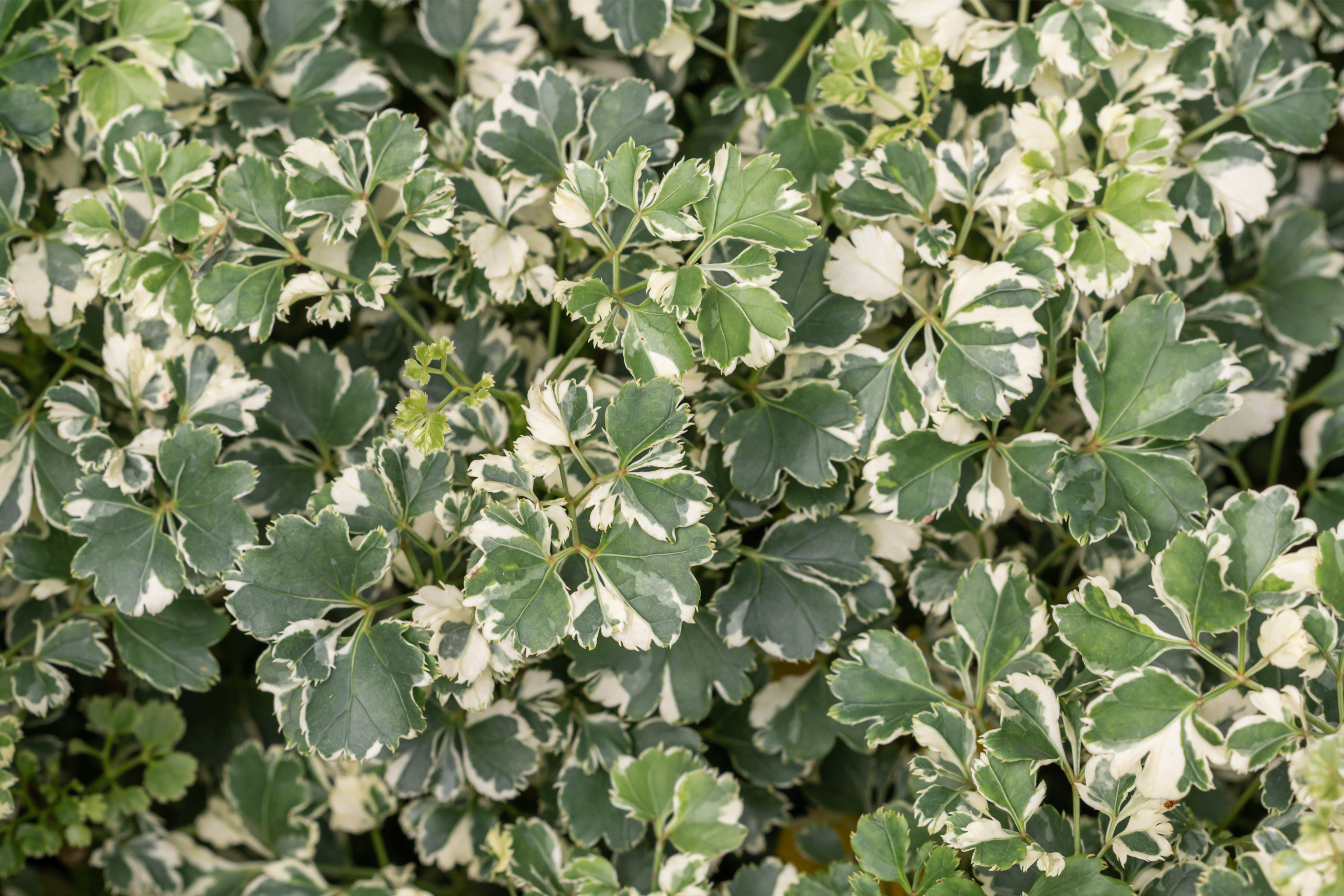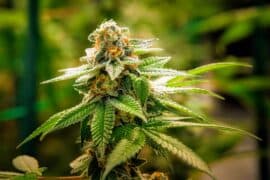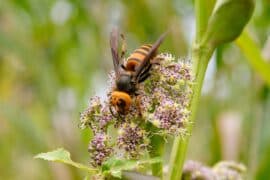Geranium aralia
(Polyscias guilfoylei)

Description
Polyscias guilfoylei, commonly known as the Variegated Aralia, is a tropical plant species that belongs to the Araliaceae family. It is a relatively popular houseplant due to its attractive foliage and easy maintenance. The plant is native to the Solomon Islands and can grow up to 6 feet tall when cultivated indoors. Description Polyscias guilfoylei is an evergreen shrub that has a bushy growth habit. It has a woody stem with multiple branches that are covered in bright green leaves with creamy white margins. The leaves are pinnately compound, meaning that they have multiple leaflets arranged in pairs along the central stem. Each leaflet is oblong in shape, and the edges are serrated, giving the plant an elegant appearance. The flowers of Polyscias guilfoylei are small and inconspicuous, and they develop in clusters on the stem tips. Habitat and Distribution Polyscias guilfoylei is native to the Solomon Islands, a group of islands located in the South Pacific Ocean. The plant is found in the rainforests and mountainous regions of the islands, where it grows as an understory plant. Outside of its native range, Polyscias guilfoylei is widely cultivated as a houseplant and ornamental plant in tropical and subtropical regions around the world, including parts of Asia, Africa, and the Americas. In its natural habitat, Polyscias guilfoylei thrives in warm and humid conditions, with average temperatures ranging from 22 to 28 degrees Celsius (71 to 82 degrees Fahrenheit) and annual rainfall ranging from 2,000 to 4,000 millimeters (79 to 157 inches). The plant prefers well-draining soils and can grow in both shaded and partially shaded areas. Due to its popularity as a houseplant and ornamental plant, Polyscias guilfoylei can now be found in many different habitats and climates worldwide, although it is not considered an invasive species in most areas. Cultivation Polyscias guilfoylei is a popular houseplant due to its attractive foliage and ease of cultivation. Here are some guidelines for cultivating Polyscias guilfoylei: Light: Polyscias guilfoylei prefers bright, indirect light, but it can also tolerate some shade. Avoid placing the plant in direct sunlight, as this can scorch the leaves. Temperature: Polyscias guilfoylei thrives in warm and humid conditions, with average temperatures ranging from 22 to 28 degrees Celsius (71 to 82 degrees Fahrenheit). Watering: Polyscias guilfoylei prefers moist soil, but it is important not to overwater the plant, as this can lead to root rot. Allow the soil to dry out slightly between watering, and water the plant thoroughly when the top inch of soil feels dry to the touch. Humidity: Polyscias guilfoylei prefers high humidity, so it is a good idea to mist the plant regularly or to place a tray of water near the plant to increase the humidity level. Soil: Polyscias guilfoylei prefers well-draining soil that is rich in organic matter. A potting mix consisting of equal parts of peat moss, perlite, and vermiculite is ideal. Fertilizer: Polyscias guilfoylei benefits from regular fertilization during the growing season (spring and summer). A balanced, water-soluble fertilizer can be applied every two weeks to promote healthy growth. Pruning: Polyscias guilfoylei can be pruned to maintain its shape and promote bushy growth. Prune the plant in early spring before new growth appears. Propagation: Polyscias guilfoylei can be propagated through stem cuttings. Take stem cuttings from the top of the plant and plant them in a potting mix consisting of equal parts of peat moss and perlite. Keep the soil moist and the cuttings in a warm, humid environment until they have rooted. Overall, Polyscias guilfoylei is a relatively easy plant to cultivate, making it a popular choice for houseplant enthusiasts. With proper care, the plant can thrive and bring beauty to any indoor space. Propagation Polyscias guilfoylei can be propagated through stem cuttings. Here are some guidelines for propagating Polyscias guilfoylei: Take stem cuttings: Take stem cuttings from the top of the plant, using a sharp, clean pair of scissors or pruning shears. Each cutting should be about 4-6 inches long and should have at least one node (a point on the stem where leaves emerge). Remove lower leaves: Remove the lower leaves from the stem, leaving only a few leaves near the top. Dip in rooting hormone: Dip the cut end of the stem in rooting hormone to encourage root development. Plant in soil: Plant the stem cutting in a potting mix consisting of equal parts of peat moss and perlite. Water the soil thoroughly and cover the pot with a plastic bag to create a humid environment. Keep in warm, bright location: Place the pot in a warm, bright location, but away from direct sunlight. Keep the soil moist but not waterlogged. Wait for roots to form: After a few weeks, roots should begin to form. You can test for root development by gently tugging on the stem. If there is resistance, roots have formed. Remove plastic bag: Once roots have formed, remove the plastic bag and gradually expose the new plant to more light. Transplant to a larger pot: Once the new plant has grown several new leaves and has a well-established root system, it can be transplanted into a larger pot filled with a well-draining potting mix. Propagation by stem cuttings is a reliable and straightforward method for propagating Polyscias guilfoylei. With proper care and attention, newly propagated plants can quickly grow into healthy, mature plants. Uses Polyscias guilfoylei has a variety of uses, both practical and decorative. Here are some common uses of Polyscias guilfoylei: Houseplant: Polyscias guilfoylei is a popular houseplant due to its attractive foliage and ease of care. It can be grown indoors in a container or planter and is often used to add color and interest to living spaces. Landscaping: In tropical regions, Polyscias guilfoylei can be used as a landscaping plant to add texture and color to gardens and outdoor spaces. It can be grown as a hedge, screen, or specimen plant. Medicinal: The roots and leaves of Polyscias guilfoylei have been used in traditional medicine to treat a variety of ailments, including skin rashes, insect bites, and fungal infections. The plant is believed to have anti-inflammatory, antifungal, and antimicrobial properties. Air purification: Like many houseplants, Polyscias guilfoylei can help purify the air in indoor spaces by removing toxins and pollutants from the air. Feng Shui: In Feng Shui, Polyscias guilfoylei is believed to bring good luck, prosperity, and positive energy to homes and businesses. Overall, Polyscias guilfoylei is a versatile plant with many uses, making it a popular choice for both indoor and outdoor spaces. Whether used for its aesthetic value or its medicinal properties, Polyscias guilfoylei is a valuable and attractive addition to any environment. Medicinal Properties The roots and leaves of Polyscias guilfoylei are used in traditional medicine to treat a range of ailments. The plant is believed to have antifungal, anti-inflammatory, and antimicrobial properties. The leaves are also used as a poultice to treat skin conditions such as rashes and insect bites. Polyscias guilfoylei is an attractive and easy-to-grow plant that is popular among houseplant enthusiasts. It is a versatile plant that can be used for decorative purposes or as a natural remedy for various ailments. With proper care, Polyscias guilfoylei can thrive and bring beauty to any indoor space. Varieties Polyscias guilfoylei has several cultivars, each with unique characteristics that set them apart from the standard plant. Some popular cultivars include: 'Marginata': This cultivar has leaves with a wide creamy white margin. It is often referred to as the "Variegated Aralia" due to its attractive variegation. 'Picturata': This cultivar has leaves with a narrow cream margin. It is also known as the "Narrow-leaved Aralia." 'Balfouriana': This cultivar has leaves that are smaller and more finely divided than the standard plant. It is sometimes referred to as the "Dwarf Variegated Aralia." 'Victoriae': This cultivar has leaves that are larger and more deeply divided than the standard plant. It is sometimes referred to as the "Giant Variegated Aralia." Pests and Diseases Like all houseplants, Polyscias guilfoylei is susceptible to certain pests and diseases. Spider mites and mealybugs are common pests that can infest the plant. If left untreated, these pests can cause leaf discoloration and stunted growth. Regularly inspecting the plant for signs of infestation and treating it with an insecticidal soap or neem oil spray can help control these pests. The plant is also susceptible to root rot if overwatered or if it is planted in poorly-draining soil. To prevent root rot, it is essential to allow the soil to dry out slightly between watering and to use a well-draining potting mix. Conservation Status The conservation status of Polyscias guilfoylei is not listed on the IUCN Red List of Threatened Species. However, like many plant species, the wild populations of Polyscias guilfoylei are at risk due to habitat loss and deforestation. As a result, it is important to ensure that the plant is cultivated sustainably and that its natural habitat is conserved to protect the species and its ecosystem. In addition, it is essential to prevent the spread of invasive species, which can compete with and displace native plant populations, including Polyscias guilfoylei. Conclusion Polyscias guilfoylei is an attractive and versatile plant that is popular among houseplant enthusiasts. It is easy to care for and can thrive in a range of growing conditions. With its attractive variegation and elegant foliage, Polyscias guilfoylei is a great addition to any indoor space. Whether used for decorative purposes or as a natural remedy, this plant is sure to bring beauty and joy to any environment.
Taxonomic tree:







